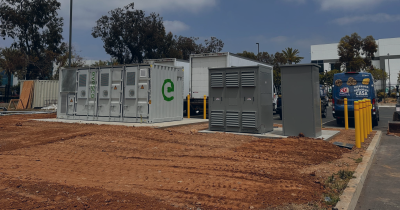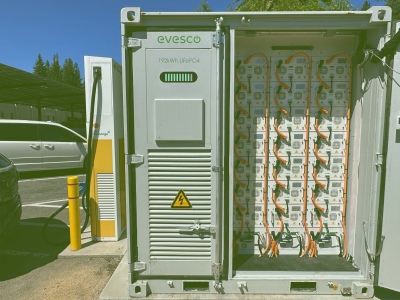The Power of Peak Shaving: A Complete Guide
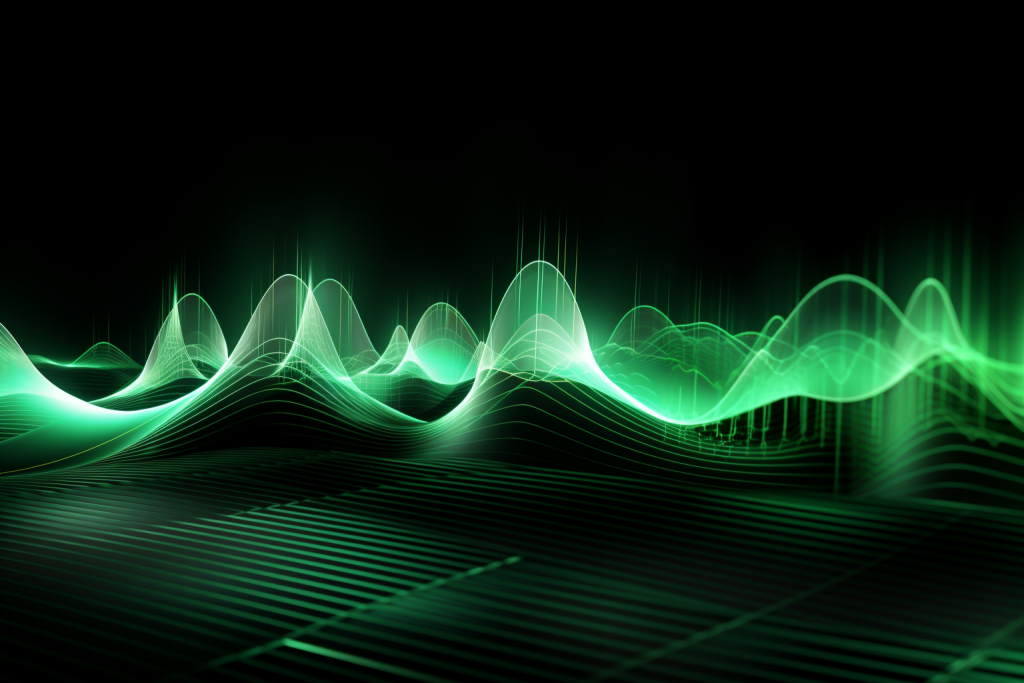
Managing peak electricity demand is crucial as global consumption rises, straining grids, driving costly upgrades, and increasing outages. One solution that is gaining traction is peak shaving. But what is peak shaving, how does it work, and why is it vital in today’s energy mix? This peak shaving guide explains these questions and shows why more businesses use it to manage energy demand.
WHAT IS PEAK SHAVING?
Peak shaving refers to reducing energy use during the grid’s peak demand.
Peak demand occurs in the morning and evening, straining the grid and risking outages when supply can’t meet demand.
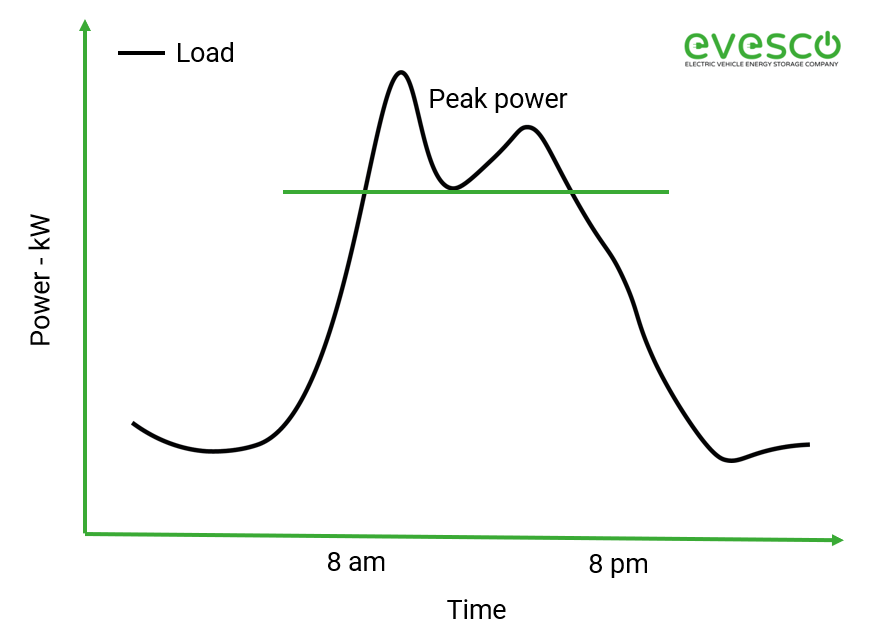
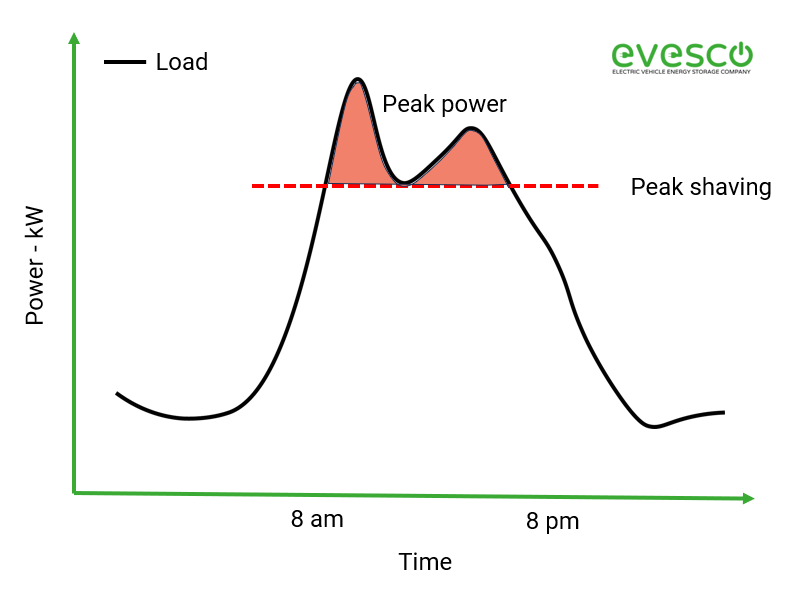
HOW DOES PEAK SHAVING WORK?
Peak shaving works by energy consumers reducing their power usage from the electric grid throughout these peak periods. Reducing power usage from the grid is possible by either scaling down on power usage (through lower production), using stored energy from a battery, or activating a non-grid power generation source on site. Essentially, this shaves off the top of the power demand curve, hence the term peak shaving.
LOAD SHIFTING VS. PEAK SHAVING
Load shifting, or demand response, optimizes electricity use and can reduce energy costs. Like peak shaving, load shifting eases grid stress during peak periods but achieves it differently.
Load shifting involves moving energy consumption from high-demand (peak hours) to low-demand (off-peak hours) periods. The goal is to reduce peak demand and boost off-peak use, smoothing the daily demand curve.
For example, charge fleet vehicles or run industrial machinery at night or early morning when grid demand is lower.
How does it differ from peak shaving? As we know, peak shaving lessens the energy demand at peak times, usually through energy storage or on-site generation. In other words, peak shaving cuts off the tops of the demand peaks.
Whereas load shifting redistributes energy demand from peak times to off-peak times. Load shifting doesn’t necessarily reduce the total energy used. Instead, it changes when that energy is used to achieve a more level or balanced daily demand. See below illustrations which highlight the differences of load shifting vs. peak shaving.
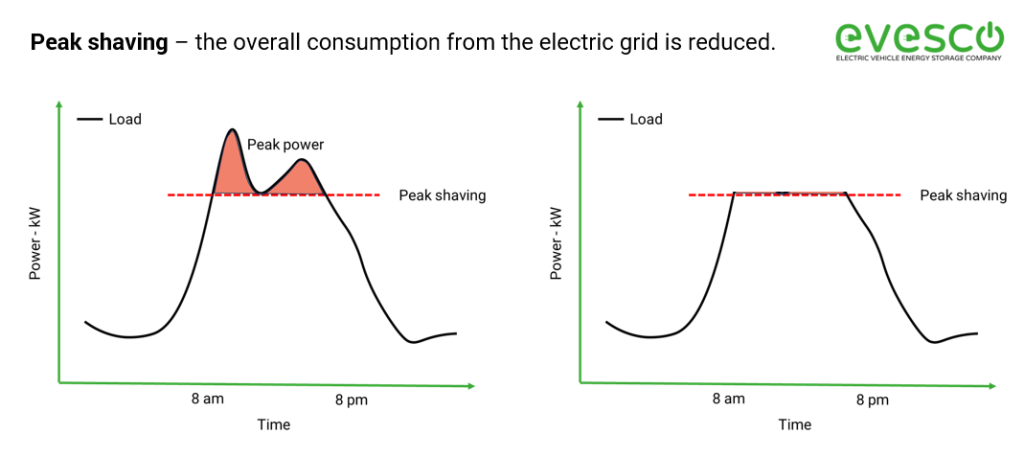
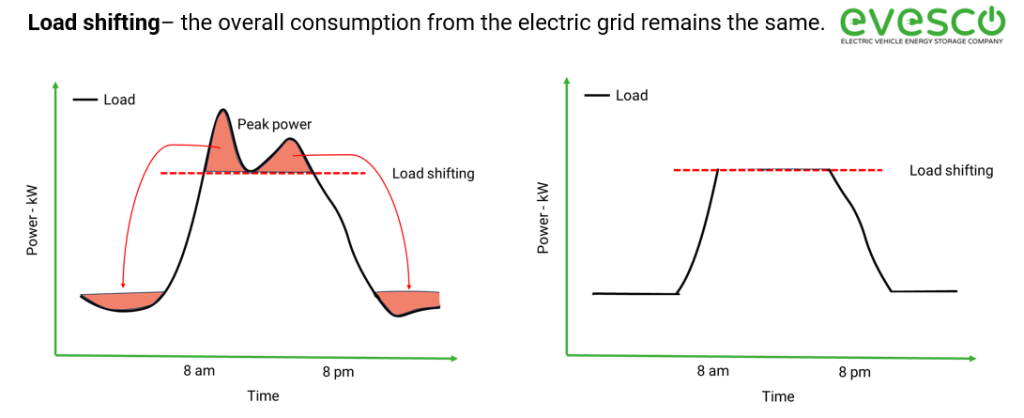
Energy storage can facilitate both peak shaving and load shifting. For example, a battery energy storage system (BESS) stores energy off-peak and discharges it during peak times, supporting both peak shaving and load shifting. Below shows examples of a BESS being used for peak shaving and load shifting.
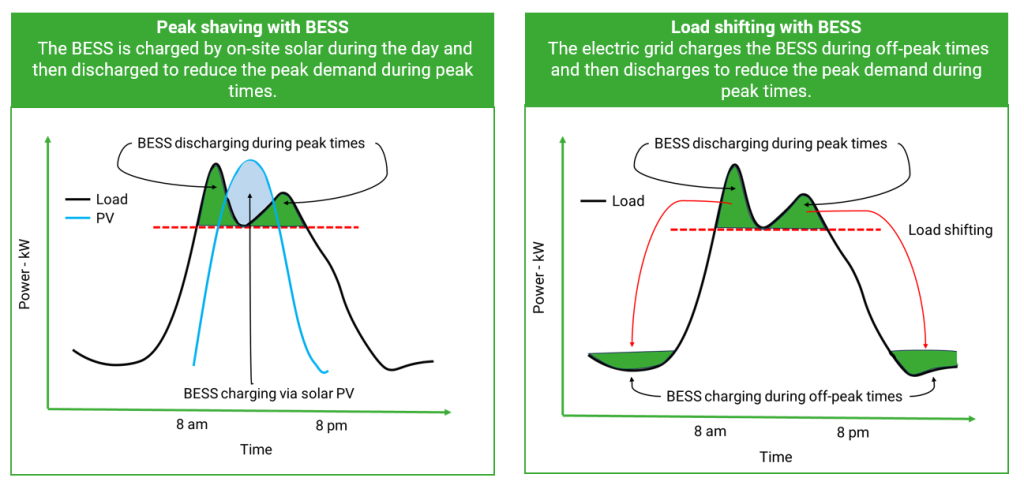
WHEN TO USE PEAK SHAVING INSTEAD OF LOAD SHIFTING
Choosing peak shaving or load shifting depends on the specific application and scenario. Elements that need to be considered include the energy demand profile, the variability of electricity prices, and the loads’ flexibility.
Here are a few scenarios where peak shaving might make more sense than load shifting:
- High Demand Charges: Commercial and industrial customers face charges based on their highest 15-minute power usage. Energy storage can reduce these peaks, lowering demand charges without shifting the load.
- Inflexible Loads: Peak shaving suits operations that can’t shift times, like continuous manufacturing. Battery storage reduces grid demand during peaks.
- Renewable Energy Integration: Peak shaving balances intermittent renewables by storing excess energy (e.g., solar) and using it during peak times to shave demand.
Understanding the application and goals is key to selecting the right energy management strategy. Sometimes, a combination of load shifting and peak shaving could result in the most optimal solution.
STRATEGIES OF PEAK SHAVING
Peak shaving can be achieved using various strategies, each with strengths and considerations. Here are the main approaches to peak shaving:
- Battery Energy Storage System (BESS): BESS stores energy when grid demand is low and releases it during peaks, providing fast, flexible peak shaving and managing intermittent renewable generation.
- On-site Generation: Generators, solar panels, or wind turbines can supply power during peak periods, often paired with energy storage for optimal results.
- Energy Efficiency Improvements: Upgrading equipment, lighting, insulation, or operations reduces overall electricity demand, helping shave peaks.
- Demand Response Programs: These programs reward users for reducing electricity use during peak periods, offering incentives or bill discounts in response to utility signals.
The most effective peak shaving combines strategies tailored to energy demand, grid infrastructure, budget, and business goals. Advanced technologies like IoT devices and smart meters provide detailed usage data to optimize implementation.
BATTERY ENERGY STORAGE FOR PEAK SHAVING
Energy storage technologies, such as battery energy storage systems (BESS), can be crucial in peak shaving. Within off-peak hours, energy consumers can store energy in these battery systems. Then, in peak hours when demand is high, this stored energy can be dispatched to the load, effectively shaving off the peak demand the grid would’ve had to supply.
Discharging a BESS during peak hours stabilizes the grid and cuts costs by avoiding expensive peak-time electricity. Consumers can avoid these higher costs by using stored energy at these times instead of drawing from the electric grid.
A BESS can also be used to feed energy back to the grid rather than to a load. In this scenario, the grid will have additional energy to supply during this peak time. Various BESS locations worldwide are used solely to help improve the stability and reliability of the electric grid.

PEAK SHAVING COST SAVINGS
The potential for cost savings when utilizing battery energy storage systems for peak shaving is significant. Considerable savings are even further evident for high-power demand loads like DC fast electric vehicle charging stations. The rapid increase in power demand while charging an EV can strain a local grid. However, these charging stations can benefit from a more consistent, resilient, and affordable power supply by integrating with a BESS for peak shaving.
The extent of these savings depends on various factors. For instance, the electricity pricing structure in your area plays its part. If electricity prices experience wide day-to-day fluctuations, or if you’re a commercial customer subjected to high demand charges, peak shaving can lead to substantial energy cost savings. The higher the demand charges, the higher the potential savings.
The size and efficiency of the BESS also matter. Systems with larger capacities and higher round-trip efficiencies can store and use greater energy throughout peak periods, potentially leading to significant savings. The energy consumption profile also impacts savings. For instance, if usage has pronounced peaks when a DC fast charger is used, there’s extensive scope for savings by shaving these high peaks.
How often peak demand events happen also matters. More frequent peaks allow enhanced opportunities to use stored energy rather than drawing from the electric grid, which can result in higher savings.
A detailed analysis of your situation is essential to understand the potential savings. This analysis should consider the cost of the BESS itself, including the initial investment, installation, operation and maintenance costs, and system life. The savings gained from peak shaving should be compared to these costs to understand the return on investment (ROI) and the payback period. Analyzing payback and ROI is something EVESCO does for its customers when reviewing BESS applications, including peak shaving.
TYPES OF LOADS SUITABLE FOR PEAK SHAVING
Certain types of loads are more suitable for peak shaving, particularly those with a high power draw, and can be flexible when operating. Here are a few examples:
Electric Vehicle (EV) Charging Stations
In the case of DC fast charging stations, the power demand can be substantial with 360 kW chargers and above. Battery energy storage systems can help control and manage the energy drawn from an EV charging station by peak shaving during high-demand periods to minimize the impact on the grid and decrease demand charges.
HVAC Systems
Heating, ventilation, and air conditioning (HVAC) systems can consume significant power, especially in large commercial buildings and manufacturing facilities. The operation of these systems can be optimized to reduce energy usage within peak times through energy storage or integrated on-site generation.
Industrial Processes
Many industrial processes consume large amounts of power. If these processes can be scheduled or adjusted to lower demand over peak periods, they can be a good fit for peak shaving. Examples could include manufacturing processes, data centers, oil refineries, or chemical companies. Many commercial businesses use battery energy storage combined with on-site generation to peak shave.
Energy-Intensive Appliances
Peak shaving can benefit large energy-intensive appliances in commercial buildings or residential communities, like water heaters, refrigeration, washers, dryers, or pool pumps, if you can control or schedule their operation to avoid peak times.
The key thing is flexibility. Any substantial load or loads that can be shifted, controlled, or managed to reduce demand over peak periods will likely benefit from peak shaving. The availability of battery energy storage systems can provide even more flexibility, as these can store energy throughout off-peak times and provide it in peak times, facilitating peak shaving even for loads that need to operate during peak periods.
Strategies like peak shaving will become increasingly vital as the energy landscape evolves. Battery energy storage offers a practical, flexible, and increasingly affordable solution for peak shaving, supporting grid stability, enabling the integration of renewables, and reducing electricity costs. As we transition towards a sustainable, net-zero energy future, solutions like battery energy storage for peak shaving will undoubtedly play a pivotal role.

